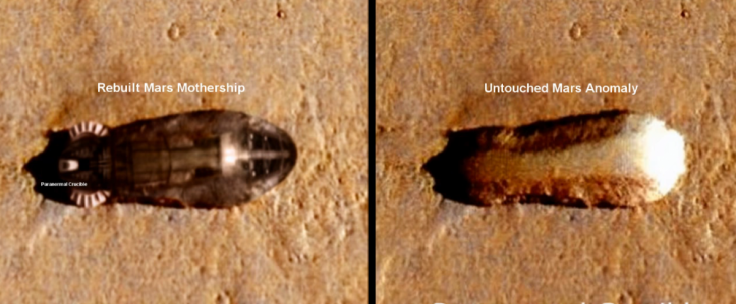
Barry DiGregorio, an astrobiologist and an honorary research fellow at the University of Buckingham has claimed to have found the evidence of alien life on Mars. The scientist made the conclusion after studying the images taken by NASA's Mars Curiosity Rover. Barry DiGregorio revealed that he has found the evidence of alien footprints on the Mars, and he alleged that NASA is intentionally trying to cover it up.
Crystal-shaped features on Mars raise a billion questions
A couple of weeks ago, NASA has announced that the Curiosity Rover has discovered evidence of gypsum-like crystals on Mars. Soon after the discovery, eminent scientists called it a milestone achievement and added that it could help them to figure out when water disappeared from the red planet.
But Barry DiGregorio has put forward a different theory stating that these are actually tiny alien footprints. He believes that these tracks are actually traced fossils on Mars which are very similar to that of the earth.
"NASA has turned its back on trying to get the data on this. The order came down from NASA HQ that they should move the rover on to the next point. They didn't feel it was important enough to look at, I thought that was very odd, despite the fact a gale crater was host to probably a series of lakes for billions and billions of years. Crystals don't add up. Crystals don't branch or twist. We're talking about something that might have been equivalent to the Ordovician period on Earth," said Barry DiGregorio, Daily Galaxy reports.
According to experts, trace fossils are footprints and feces which were left behind by living creatures roamed in the areas during the past. Trace fossils are known for providing indirect evidence of life in the past, as they are not the preserved remnants of a living animal.
NASA's explanation on trace fossil like structure
On the other hand, NASA has rubbished the theory of trace fossils. According to the world's leading space agency, the tracks which we see in the photographs are much smaller in reality, and it looks big just in photos. Scientists at the space agency revealed that these tracks are so tiny, and they are about the size of a sesame seed. They added that these structures look very similar to the gypsum crystals on earth.
"These shapes are characteristic of gypsum crystals. These can form when salts become concentrated in water, such as in an evaporating lake," said Sanjeev Gupta of the NASA's Mars Curiosity science team explains, Tech Times reports.
However, Barry DiGregorio made it clear that he will continue his research on trace fossils and revealed that he has plans to present this theory at a conference that will be held in Australia this June.
[See also: Chinese space station Tiangong-1 hurtling toward earth, just weeks away]









